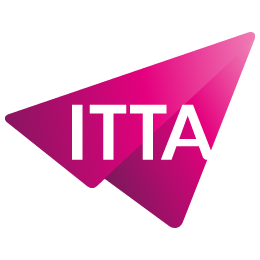Home > Evaluate the skills of your employees
The evaluation of the professional skills of its employees is an obligation that concerns all companies. This approach allows managers to determine the level of skills of their employees for a good management of the latter. This translates into an overall increase in the company’s skills. However, this requires a good methodology as well as good preparation.
Why and how to evaluate the skills of your employees? We take a look at the methods and tools that are useful for your company.
Accelerated technological development and process changes constantly create new knowledge and competence requirements. In order to remain competitive in their markets, companies and organisations need to have a clear picture of the skills they have available.
This requires proper personnel management, and thus regular assessment of competences. This virtuous routine has benefits for both parties.
The aim of the assessment is to find out exactly what skills each employee has. This knowledge will then be useful for optimising the management of skills within the company and for spotting any previously unknown talents. Knowing the strengths of employees also makes it possible to remunerate them at their fair value and to observe an increase in the competence of the teams.
On the other hand, assessing the skills of employees makes it possible to identify training needs within the company. The HRD thus ensures that employees are competent in their positions and in the tasks assigned to them.
Evaluating employees’ skills creates a good atmosphere at work. It facilitates collaboration and develops exchange and discussion. In fact, personnel evaluations preserve the anonymity of each participant. It is then possible to identify problems that need to be corrected without pointing the finger at any individual in the team.
The system: Diagnosis – Training – Evaluation
Allows the employee to, among other things
Assessing the competences of employees starts with identifying the competences that the company has. It is therefore essential to identify and update each of them. Here are the main steps:
This crucial stage aims to establish a common reference framework within the company for the evaluation of competences. Management, human resources, managers and employees work together to obtain a reliable and satisfactory result for all. They reflect on: the creation of job descriptions, the distribution of the welcome kit, the sharing of documents presenting the evaluation criteria, etc.
The most commonly used approaches to assessing employee skills in companies are :
Digitalisation overcomes the obstacles associated with paper-based assessment. You can equip your company with competency management software to facilitate the exchange of information. Such a tool also serves as a support for the various assessment interviews.
A competency assessment grid is an HR tool available to all parties (managers, human resources and employees) to provide the company with a common assessment model. It guarantees a complete and rational assessment. It is most often a Microsoft office file, often Microsoft Excel, consisting of three main competences:
Computer software for assessing employee skills simplifies and supports interviews. Whether it is an HR solution accessible via a platform or dedicated software, you get a complete view of your employees’ career development possibilities. Among the most commonly used tools, most have the following functionalities: :
Competence assessment can be done at any time. At the beginning of the collaboration, the job interview allows the basic skills of the future employee to be determined. At this stage, the employer makes sure that the candidate has the right skills for the job.
This assessment can also be done on an annual basis to measure the actual knowledge and skills of the employee. These annual appraisal interviews between the HRD and each employee are necessary to implement a good talent management and competency measurement policy.
It should be noted that evaluation can also be carried out at the beginning and end of a professional training course. It is then a question of measuring the increase in employees’ skills at the end of the training.
However, regardless of the time chosen, the employee must be informed in advance of the date and methods of the assessment. Moreover, the employee can only be assessed against the objectives set.

ITTA is the leader in IT training and project management solutions and services in French-speaking Switzerland.
Our latest posts
Subscribe to the newsletter

Nous utilisons des cookies afin de vous garantir une expérience de navigation fluide, agréable et entièrement sécurisée sur notre site. Ces cookies nous permettent d’analyser et d’améliorer nos services en continu, afin de mieux répondre à vos attentes.
Monday to Friday
8:30 AM to 6:00 PM
Tel. 058 307 73 00
ITTA
Route des jeunes 35
1227 Carouge, Suisse
Monday to Friday, from 8:30 am to 06:00 pm.